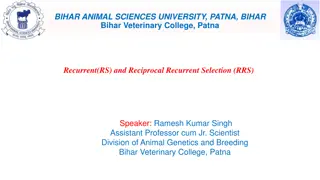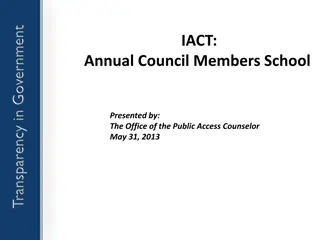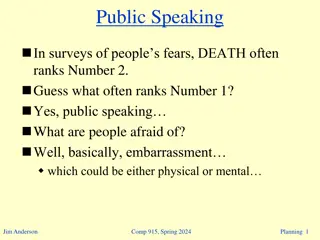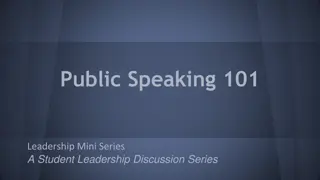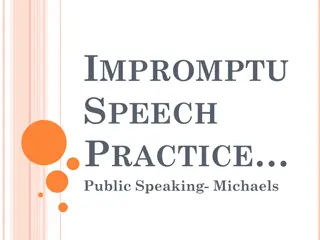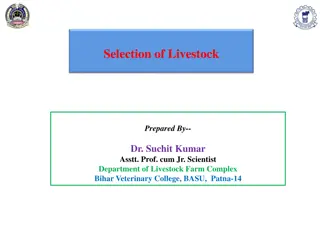Effective Topic Selection for Public Speaking
Discover strategies to select engaging speech topics by exploring your expertise, avoiding overused themes, brainstorming for ideas, and defining the purpose of your speech. Narrow down your topic effectively to captivate your audience and deliver a memorable presentation.
Download Presentation

Please find below an Image/Link to download the presentation.
The content on the website is provided AS IS for your information and personal use only. It may not be sold, licensed, or shared on other websites without obtaining consent from the author.If you encounter any issues during the download, it is possible that the publisher has removed the file from their server.
You are allowed to download the files provided on this website for personal or commercial use, subject to the condition that they are used lawfully. All files are the property of their respective owners.
The content on the website is provided AS IS for your information and personal use only. It may not be sold, licensed, or shared on other websites without obtaining consent from the author.
E N D
Presentation Transcript
A POCKET GUIDE TO PUBLIC SPEAKING 4THEDITION Chapter 7 Selecting a Topic and Purpose
Decide Where to Begin Methods Make an inventory of your expertise. Focus on social issues of consequence. Pick a topic that you Are drawn to; Want to know more about.
Steer Clear of Overused and Trivial Topics Stay away from overused topics. Consider topics that yield fresh insights. Beware of choosing highly charged topics.
Try Brainstorming to Generate Ideas Word association Write down a single topic. Write things that come to mind. Continue until you have 15-20 items. Narrow the list. Select the best topic.
Try Brainstorming to Generate Ideas (cont.) Topic (mind) mapping Write a potential topic on paper. Write down related ideas around it. A topic map Allows you to visualize relationships; Spurs creative thinking.
Identify the General Purpose of Your Speech General speech purpose Answers the question, What is my objective in speaking on this topic to this audience on this occasion?
Identify the General Purpose of Your Speech (cont.) Three general purposes for a speech: Educate or inform Persuade Mark a special occasion Speech occasion often suggests a purpose
Narrow Your Topic Consider what the audience already knows. Consider what aspects are most relevant. Pick a discrete topic category. Restrict your main points. Should be between two and five
Narrow Your Topic (cont.) Brainstorming can help narrow your topic. Brainstorm by category. Use an online subject directory. Browse through related subtopic links.
Form a Specific Speech Purpose Specific speech purpose What you want listeners to learn/do/reconsider/agree with Be specific about your aim. State your aim in action form. Seldom articulated in the speech itself
Compose a Thesis Statement Thesis statement (central idea) Theme of the speech Stated in a single, declarative sentence Expresses what you attempt to demonstrate Must be clearly stated Entire speech rests on it
Postpone Development of Main Points Formulate the purpose and thesis first. Develop main points afterward. Informative or persuasive speech Thesis statement Proposes it is true or is believed Presents facts and evidence
Postpone Development of Main Points (cont.) Persuasive speech Thesis represents what you will prove Main points are your arguments Informative speech Thesis describes what listeners will learn


